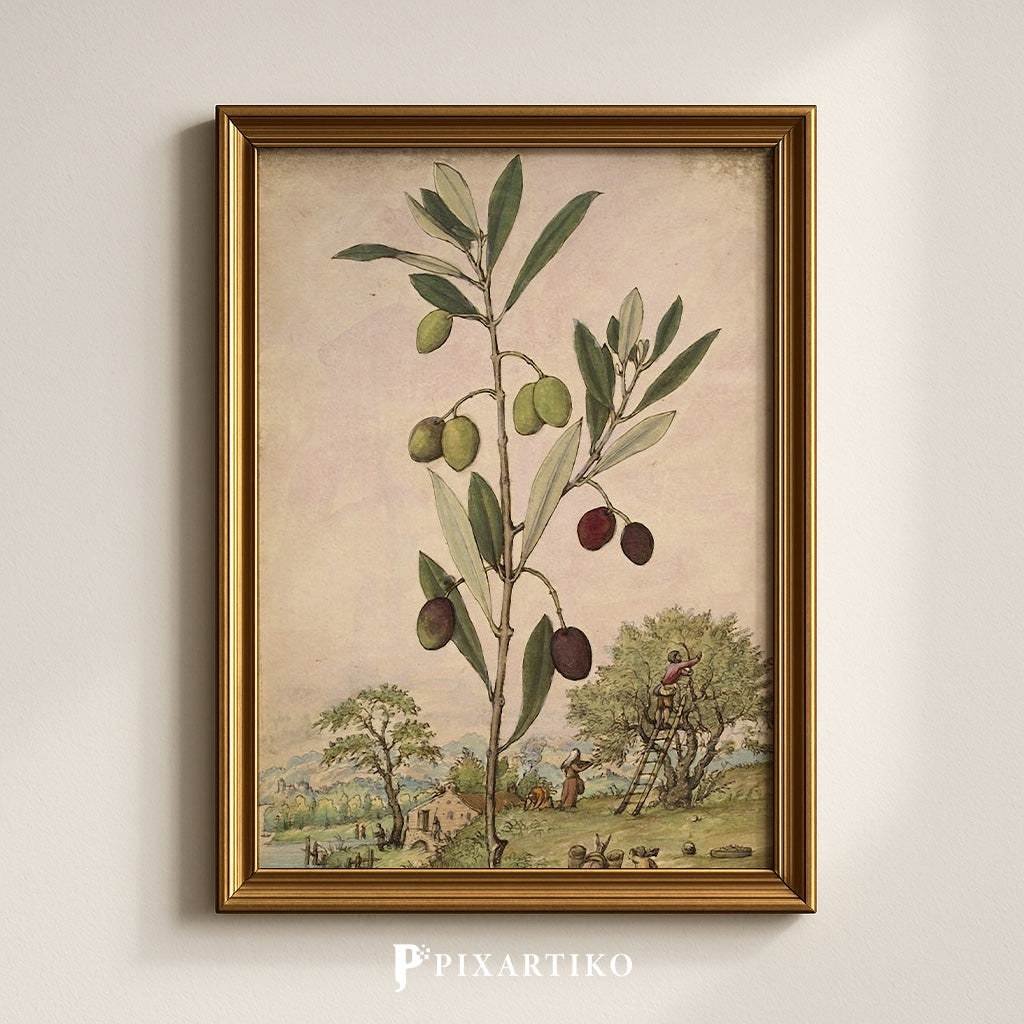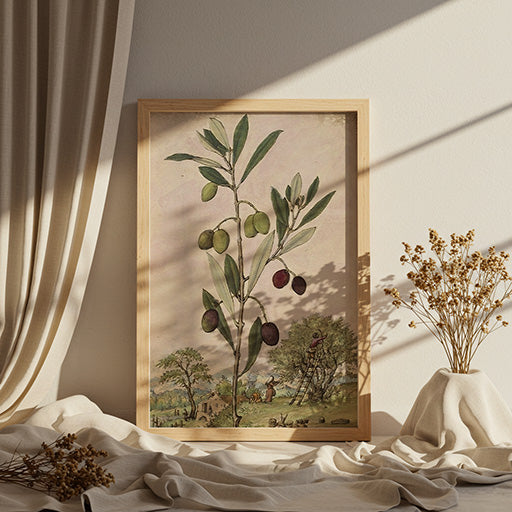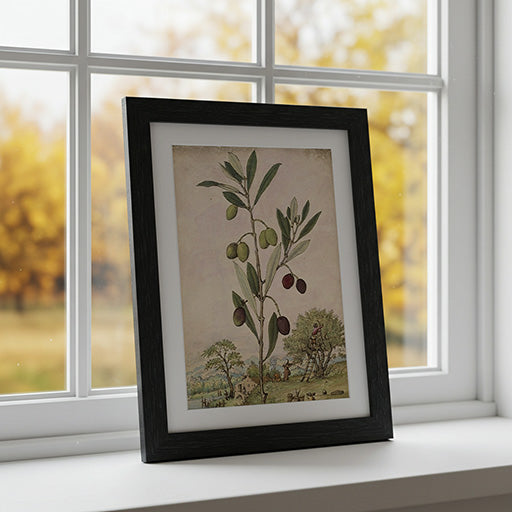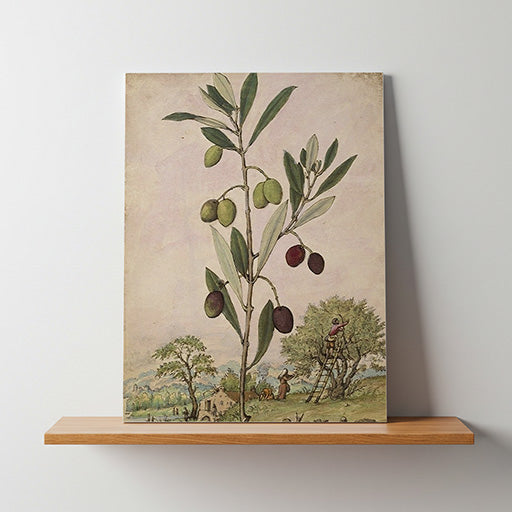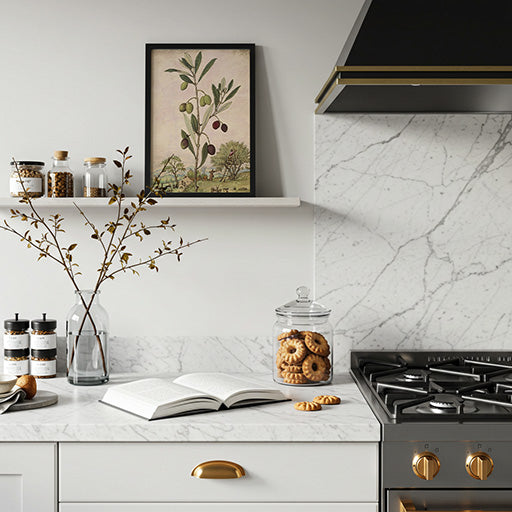Olea europaea | Vintage Botanical Print
Olea europaea | Vintage Botanical Print
No se pudo cargar la disponibilidad de retiro
Vintage Botanical Print | 16th-Century Olive Tree Illustration | Antique Herbal Art | Mediterranean Wall Decor | Digital Download
Celebrate Mediterranean heritage with Olea europaea, a rare botanical watercolor illustration from the 16th century by Italian artist and botanist Gherardo Cibo. Featured in Mattioli’s expanded edition of Dioscorides’s De Materia Medica, this artwork depicts the iconic olive tree with lifelike olives at various stages of ripeness, framed by a rustic countryside harvest scene.
Perfect for fans of vintage botanical art, olive tree wall decor, natural history prints, and printable antique plant illustrations.
➤ Instant digital download
➤ High-resolution file, ready to print
➤ Ideal for kitchen decor, Mediterranean interiors, cottagecore spaces, or herbalist collections

Pixartiko Collective – Usage License
Prints allowed for personal use and resale only as physical products in local shops. Use in other physical goods permitted if pixartiko.com is credited when possible.
Digital resale, sharing, or publishing is strictly forbidden.
Designs are not public domain and cannot be distributed online.
© pixartiko.com – All rights reserved.
Print Sizes
🖼 Included Print Sizes (No Cropping Needed)
This high resolution digital file is optimized for printing at the following standard sizes, no cropping or borders required. Just download, print, and frame:
| Inches | Centimeters | Suggested Use |
|---|---|---|
| 11.7 x 16.5 | A3 – 29.7 x 42 | Wall art, poster, vertical frame |
| 8.3 x 11.7 | A4 – 21 x 29.7 | Standard frame, home office decor |
| 5.8 x 8.3 | A5 – 14.8 x 21 | Small prints, journaling inserts |
| 4.1 x 5.8 | A6 – 10.5 x 14.8 | Greeting card, mini gift |
| 7 x 10 | 17.8 x 25.4 | Portrait print, versatile framing |
| 5 x 7 | 12.7 x 17.8 | Classic photo size, shelf display |
🖨️ All sizes are print-ready at 300 DPI, maintaining the original image ratio. No cropping or borders required.
📂 Your download includes:
- 1 high resolution JPEG file (2134 x 2988 px).
- Artistic Declaration Certificate in PDF.
- Free gift: The Ages of Painting guide — a visual journey through the history of painting.
🎨 Need a different size or format?
No problem! Just send me a message and I’ll be happy to adapt it for you.
Art Review
“Olea europaea” by Gherardo Cibo: The Olive Tree as a Pillar of Civilization
In his sublime “Olea europaea”, the Renaissance artist and botanist Gherardo Cibo elevates the olive tree from agricultural subject to cultural icon. With his characteristic blend of scientific observation and poetic storytelling, Cibo captures not only the anatomy of the tree, but its enduring symbolism — as sustenance, as labor, as legacy.
The olive branch stands at the center of the composition, slender and vertical, dotted with fruits in various stages of ripeness — from green to deep purple. The leaves, with their silvery undersides and pointed elegance, are rendered with serene clarity. Each pair of olives seems to hold a quiet dialogue, as if whispering of seasons passed, of oil pressed, of peace offered.
But the true genius of the piece lies in its contextual layering. In the lower register, a pastoral scene unfolds with exquisite subtlety. Harvesters climb ladders into dense olive trees, their bodies bent in the timeless choreography of collection. Women carry baskets on their heads; donkeys wait patiently by the slope; a rustic dwelling nestles into the hillside. In the distance, a river winds toward a blue horizon, its calmness contrasting with the silent diligence of rural life.
Cibo’s perspective here is dual: the plant is both magnified and humbled. While the central sprig is scaled large — almost as a botanical monument — the background anchors it in the human world. This duality reflects the Renaissance humanist vision: nature and mankind in harmony, each enhancing the other.
What makes “Olea europaea” so resonant is not just its beauty, but its resonance across time. The olive tree — sacred in the Mediterranean, emblem of wisdom, victory, and endurance — is shown here not in mythic abstraction, but in grounded daily life. Cibo reminds us that what is sacred often lies in the ordinary: in toil, in soil, in the act of reaching upward toward fruit and sky alike.
In this quiet, masterful work, Gherardo Cibo honors not just a tree, but an entire way of life. “Olea europaea” is both homage and mirror — a reminder that within every harvest lies a human story, and within every leaf, a gesture of continuity.

Share
